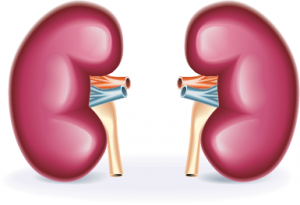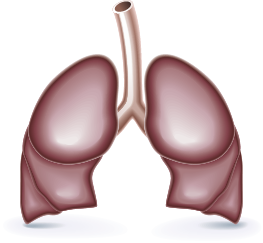This puffed-up Raphanus sativus root has been part of the diet since ancient times. Botanists have hunted and tracked the origin of radishes. They have traced radishes as being components of medicine in China as early as 400 BC. In 4th BC, Egyptians wrote about how radishes are a common part of their diet long before their famous pyramids were built.
Radishes are used as a mode of payment (along with garlic, onions, and other spices) for services rendered to their Pharaoh. The coming of radishes (the winter radish) paved way to the discovery of its food and medicinal value in the middle of 16th century. It is discovered then that aside from its diuretic ability, it also known to very good in gallstone prevention.
Greeks’ love for radish is made obvious by making imitations of them with gold. Radishes were also first grown by the first settlers of America.
Radish as Superfoods
Radish, regardless of its color and variety is packed with vitamin C, potassium, and folic acid. It is also a great source of riboflavin, vitamin B6, copper, magnesium, and calcium. It is high in fiber and is a great cleanser of the colons. The radish has an enzyme myrosinase. Myrosinase, once hydrolyze, becomes isothiocyanates and thiocyanates , both of which has anti-cancer actions.
All parts of the radish can be consumed or used medicinally. From the leaves, to the roots, the flowers, the pods, and even the seeds! The leaves of the radish, which can also be eaten, in fact contain six times of the Vit. C compared to the roots. The leaves contain calcium too.
Radish is not only a good a appetizer, it also works as a breath freshener and a laxative. It can also regulate the metabolism and improve the circulation of the blood. Below are just some of the specific illnesses that are largely targeted by radish.
- Jaundice. Radish does wonder to our liver because it helps in detoxifying by purifying the blood. It aids in removing the bilirubin (the pigment that makes a person looks yellow in cases of jaundice) and counters its overproduction. Destruction of the RBC is also prevented by ensuring increased supply of O2 in the person’s blood. Black radish is proven to work best in jaundice. The leaves are also found to be helpful in jaundice treatment.
- Piles (hemorrhoids). Radish is very abundant with indigestible carbohydrates. This type of carbohydrate aids in proper digestion and water retention. It also prevents constipation which is the main cause for piles. Because of radish’ detoxifying power, it also aids in the healing process of piles per se. The juice of the radish brings soothing effect to the digestive tract and even the excretory system. This further helps the fast relief for piles.
- Urinary Disorders. Radish are diuretic. This means that a person increases his urine production thus enabling the flushing out of bacteria naturally. Radish juice is also a remedy against inflammation and takes away the burning feeling when urinating. Kidney is also detoxified thus growth of the infection-causing bacteria is inhibited.
- Weight Loss. Radishes easily satiates your hunger and makes you feel full for longer periods. Since it is more made up of indigestible carbohydrate than the digestible ones, it is very low in calorie.
- Cancer. Its abundance in Vit-C, anthocyanins, and folic acid enables it to cure many kinds of cancer especially those of kidney, oral, stomach, intestine, and the colon. Its detoxifying property helps in healing cancer too.
- Leucoderma. Because radish has anti-carcinogenic and detoxifying properties, it is very valuable in treating leucoderma. The seeds of radish play a large role for this. They are powdered before being soaked in ginger juice or vinegar. It is then administered on the skin’s white patches. Eating the radish root itself will help speed up the healing process.
- Skin Disorders. Remember that phosphorus, Vit-C, zinc, and Vit-B complex vitamins are good for the skin. Fortunately, all of these vitamins can be found in radish. The water in the radish helps the skin stay moisturized. You can also use smashed radish as a skin cleanser especially for the skin. Rashes, drying up, and other skin problems can be solved by radish because of its disinfectant ability.
 Kidney Disorder. Radish is naturally diuretic which makes it wash away all the accumulated toxins in our kidney. When there is proper detoxification in the kidneys, toxins are also properly removed from the blood. And because radish’ disinfectant powers, it naturally protects the kidney from any infections too. Thus the overall health of the kidney widely benefits from radish.
Kidney Disorder. Radish is naturally diuretic which makes it wash away all the accumulated toxins in our kidney. When there is proper detoxification in the kidneys, toxins are also properly removed from the blood. And because radish’ disinfectant powers, it naturally protects the kidney from any infections too. Thus the overall health of the kidney widely benefits from radish.
- Insect Bites. Radish has an anti-pruritic ability which is great for treating bee stings, insect bites, wasps, hornets, etc. The juice itself can be administered to the swelling and used to reduce the pain and sooth the bitten area.
- Fever. Inflammation and high body temperature because of fever can be easily treated with radish. Simply drink radish juice peppered with black salt. The disinfectant property of radish fights of the germs that’s causing the fever and thereby healing process is accelerated.
 Asthma, Bronchitis, Respiratory Disorders. Radish is anti-congestive. It naturally relieves the congestion in the respiratory system. The throat, nose, lungs, and wind-pipe are relieved of the congestion caused by infection, colds, and other causes. The radish’ disinfectant property and vitamins helps protect the respiratory system from further infections.
Asthma, Bronchitis, Respiratory Disorders. Radish is anti-congestive. It naturally relieves the congestion in the respiratory system. The throat, nose, lungs, and wind-pipe are relieved of the congestion caused by infection, colds, and other causes. The radish’ disinfectant property and vitamins helps protect the respiratory system from further infections.
- Gallbladder and Liver. Radish is not only beneficial for those who already have jaundice, it also beneficial for those who simply wants to take care of their gallbladder and their liver. Radish helps in regulating the flow and production of bilirubin and bile, enzymes, and acids. Radish also helps in the removal of excess bilirubin in the blood.
The radish has natural-occurring enzymes of like myronaise, amylase, diastase, and esterase. The gallbladder and liver is protected from ulcers and infections because of radish.
To start incorporating radish in your diet, it pays to know the various types of radish. Continue reading for the wealth of information.
Types of Radish
In my part of the globe, the only radish type I see is the white one. And so I thought that radishes are all white. When I did my research, I did a double take at the varieties of radish. So, if you think radish is a bore, think again. You can explore the taste of the many types of radish that comes in different colors and sizes. A radish can come in color white, pink, purple, bright red, and black. Their shapes can be round and elongated. Some radish can be as small as 2 inches and some can grow to more than a foot.
Radish is basically categorized into two: spring radish and winter radish. Their respective names connote their season for growing. Spring radish are planted during the spring season and are ready for harvest in just 20-30 days. Winter radish are grown 55-60 days during the winter. Winter radish is also referred to as Daikon radish. All types of radish have a natural pest-repellent property because of its spicy smell. It can be planted along with beets, spinach, carrots, and parsnips.

Leave a Reply